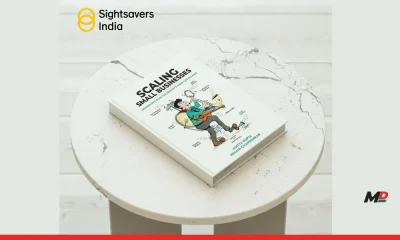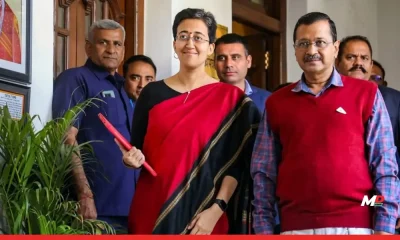Business
10 stories of accidental entrepreneurs you probably don’t know about

Becoming an entrepreneur is often romanticised as a carefully crafted plan, a meticulously executed strategy, and a relentless pursuit of a grand vision. However, the reality is that some of the world’s most successful business leaders stumbled into entrepreneurship by pure accident. These “accidental entrepreneurs” prove that passion, resilience, and a willingness to seize opportunities can be far more important than a traditional business education or a detailed roadmap.
In this article, we’ll explore the fascinating stories of several accidental entrepreneurs who have left an indelible mark on the business landscape. From the founder of Coca-Cola to the inventor of the pacemaker, these tales of serendipity and innovation will inspire you to embrace the unexpected and turn your own “happy accidents” into thriving enterprises.
The racecar driver who became a legendary carmaker: Enzo Ferrari
Enzo Ferrari’s journey to becoming one of the most iconic names in the automotive industry was anything but conventional. In 1938, Ferrari was a well-known racecar driver with a promising career, working for the Italian carmaker Alfa Romeo. However, the outbreak of World War II put a sudden halt to his racing aspirations, as the Italian government shut down Alfa Romeo’s car production.
Faced with this unexpected roadblock, and determined to carry on racing, Ferrari made a bold decision: he would start building his own cars to race. What began as a personal pursuit quickly evolved into a full-fledged business venture, as Ferrari realized he could support his racing career by selling the cars he had designed. Thus, the legendary Ferrari brand was born, not from a meticulously crafted business plan, but from the ashes of a global conflict and one man’s unwavering passion for the open road.
Which brings us nicely to our next figurehead…
The tractor manufacturer who outmaneuvered Ferrari: Ferrucio Lamborghini
Ferrucio Lamborghini’s path to entrepreneurial success was paved with a healthy dose of serendipity and a dash of revenge. Lamborghini, a successful tractor manufacturer, was also an avid Ferrari owner. However, he was not entirely satisfied with the performance of his prized sports car and decided to voice his concerns directly to Enzo Ferrari himself.
The encounter between Lamborghini and Ferrari did not go as planned, with the latter dismissing the tractor magnate’s suggestions for improvements. Incensed by Ferrari’s arrogance, Lamborghini made the fateful decision to start his own car company, determined to prove that he could build a superior sports car.
Leveraging his expertise in motors and his financial resources, Lamborghini assembled a team of former Ferrari employees who had also been disgruntled by the company’s unwillingness to listen to customer feedback. The result was the iconic Lamborghini GT 350, a car that would go on to challenge Ferrari’s dominance in the high-performance sports car market. The rest, as they say, is automotive history.
The wounded soldier who accidentally invented Coca-Cola: John Pemberton
The story of Coca-Cola’s origins reads like a Hollywood script. It all began with John Stith Pemberton, a lieutenant in the Confederate Army during the Civil War. Pemberton was wounded in the Battle of Columbus and turned to morphine as a painkiller, setting in motion a chain of events that would lead to the creation of one of the world’s most recognizable beverages.
While searching for an alternative to morphine, Pemberton accidentally blended his signature syrup with carbonated water, creating a fizzy concoction that had an alliterative sound – Coca-Cola. Initially intended to be sold as a medicinal tonic, Pemberton decided to market it as a refreshing fountain drink instead. The rest, as they say, is history. Coca-Cola went on to become a global phenomenon, all thanks to a serendipitous accident and Pemberton’s willingness to pivot his original concept.
The grocer who revolutionized the chocolate industry: John Cadbury
The humble beginnings of the Cadbury chocolate empire trace back to a small grocery store in 1824, where a young John Cadbury began selling cocoa and other provisions. Cadbury’s foray into the world of confectionery was not part of a grand plan, but rather a happy accident born out of his desire to stabilize and compact the powdery cocoa he was selling.
In an effort to make the cocoa more user-friendly, Cadbury pressed the powder into a compact bar form. However, he soon realized that this new format could be made directly edible with the addition of a sweetening agent. Thus, the world’s first chocolate bar was born, courtesy of Cadbury’s accidental innovation. The company went on to further refine the recipe, with a Swiss manufacturer later adding milk to create the first milk chocolate. Cadbury’s legacy as a renowned global confectioner is a testament to the power of serendipity and the willingness to embrace unexpected opportunities.
The inventor who illuminated the world: Thomas Edison
Thomas Edison is widely regarded as one of the most prolific inventors of all time, with over 1,000 patents to his name. However, his path to becoming the “Wizard of Menlo Park” was far from a straight line. Edison’s early career was marked by a series of job losses and financial struggles, as his insatiable curiosity and passion for research often clashed with his ability to manage his finances and professional obligations.
Despite these setbacks, Edison persevered, driven by an unwavering commitment to innovation. His first notable invention, the phonograph, earned him the moniker “The Wizard” and set the stage for his future success. Eventually, Edison expanded his ventures, founding companies like the Edison Lamp Company and the Edison Machine Works, which would ultimately merge to form the behemoth known as General Electric.
The failed experiment that saved lives: Wilson Greatbatch and the Pacemaker
The invention of the pacemaker is a prime example of how a “failed” experiment can lead to life-saving innovation. Wilson Greatbatch, an assistant professor at the University of Buffalo, was working on a device to record heart sounds when he accidentally picked up the wrong resistor, creating a circuit that generated electrical pulses mimicking the human heartbeat.
Recognizing the potential of his accidental creation, Greatbatch refined the design and developed the world’s first implantable cardiac pacemaker. This revolutionary device, which could be surgically placed within a patient’s chest to regulate abnormal heart rhythms, quickly gained popularity among medical practitioners and became a lucrative market. Greatbatch went on to found Greatbatch Inc., a company that would become a leader in the medical device industry, all stemming from a serendipitous mistake in the lab.
The un-sticky substance that became a sticky success: Dr. Spencer Silver and the Post-It Note
The story of the Post-It Note is a prime example of how a “useless” invention can be transformed into a wildly successful product. While working at 3M, Dr. Spencer Silver was tasked with developing a super-strong adhesive. Instead, he created the opposite – a super-low adhesive that could be easily removed and reapplied without leaving a trace.
Initially, Silver considered his creation to be a failure, but his colleague, Arthur Fry, recognized the potential of the low-tack adhesive for use on bookmarks and notes. After several failed attempts to introduce the product, 3M finally found success by distributing free samples with a stronger adhesive. The “Press and Peel” notes, later rebranded as Post-It Notes, went on to become one of 3M’s most iconic and profitable products, all thanks to an accidental discovery and the willingness to explore its unexpected applications.
The brewer who became a biotech billionaire: Kiran Mazumdar-Shaw
Kiran Mazumdar-Shaw’s journey to becoming one of India’s most successful entrepreneurs is a true testament to the power of resilience and adaptability. Initially, Mazumdar-Shaw had dreams of becoming a master brewer, but her ambitions were thwarted when no one in India would hire her due to her gender.
Undeterred, Mazumdar-Shaw pivoted her career, leveraging her knowledge of fermentation to launch Biocon, a biotechnology company, in 1978. Despite facing significant challenges as a young woman with limited financial resources, Mazumdar-Shaw persevered, extracting and manufacturing enzymes for export. Over the years, Biocon grew steadily, and Mazumdar-Shaw ventured into the lucrative biopharmaceuticals industry, developing and manufacturing biologics for diseases like diabetes, cancer, and autoimmune conditions.
Today, Mazumdar-Shaw is the Executive Chairperson of Biocon and Biocon Biologics, a globally recognized biotech company. Her story is a powerful reminder that sometimes the most unexpected paths can lead to the greatest successes, especially when fueled by passion, determination, and a willingness to embrace new opportunities.
The investment banker who became a beauty mogul: Falguni Sanjay Nayar
Falguni Sanjay Nayar’s journey to becoming one of India’s self-made female billionaires is a captivating tale of serendipity and entrepreneurial spirit. Nayar began her career as a consultant before transitioning into the financial services sector, eventually becoming the Managing Director of Kotak Mahindra Capital.
However, in 2012, at the age of 50, Nayar made a bold decision to leave her corporate job and venture into the world of entrepreneurship. With $2 million of her own savings, she launched Nykaa, a beauty and lifestyle retail company. Despite facing skepticism from investors who were wary of the then-nascent concept of e-commerce in India, Nayar persevered, building Nykaa’s supply chain from scratch and establishing it as a leading player in the Indian beauty market.
Today, Nykaa sells more than 4,500 brands online and has over 100 stores across India. Nayar’s success is a testament to the power of reinvention and the ability to turn one’s passions into a thriving business, even in the face of daunting challenges.
The former Tinder executive who empowered women: Whitney Wolfe Herd and Bumble
Whitney Wolfe Herd’s journey to becoming the world’s youngest self-made female billionaire is a story of resilience, determination, and the courage to start anew. In her early 20s, Wolfe Herd joined the development team for the dating app Tinder and later became the company’s Vice President of Marketing.
However, Wolfe Herd’s time at Tinder was marked by a highly publicized sexual harassment lawsuit, which prompted her to resign from the company. Undeterred, Wolfe Herd decided to create her own female-focused dating app, Bumble, with the goal of empowering women to make the first move in romantic relationships.
Within just one month of launching, Bumble had been downloaded 100,000 times, a testament to the app’s appeal and Wolfe Herd’s ability to turn her personal experience into a powerful mission. Bumble’s success has made Wolfe Herd a role model for aspiring entrepreneurs, proving that even when faced with adversity, one can transform their “pain into purpose” and create a thriving business.
Embrace the unexpected
The stories of these accidental entrepreneurs demonstrate that the path to success is often paved with unexpected twists and turns. Whether it was Enzo Ferrari turning a wartime setback into a legendary automotive empire, or Ferrucio Lamborghini using customer feedback to outmaneuver his rival, these individuals prove that passion, resilience, and a willingness to seize opportunities can be far more valuable than a meticulously crafted business plan.
By embracing the unexpected and turning their “happy accidents” into thriving enterprises, these entrepreneurs have left an indelible mark on the business world. Their stories serve as a powerful reminder that sometimes the most transformative innovations and disruptive ideas can emerge from the most unlikely of circumstances. So, the next time you encounter an unexpected roadblock or a seemingly “useless” invention, take a page from these accidental entrepreneurs and consider how you might turn it into your next big success story.














